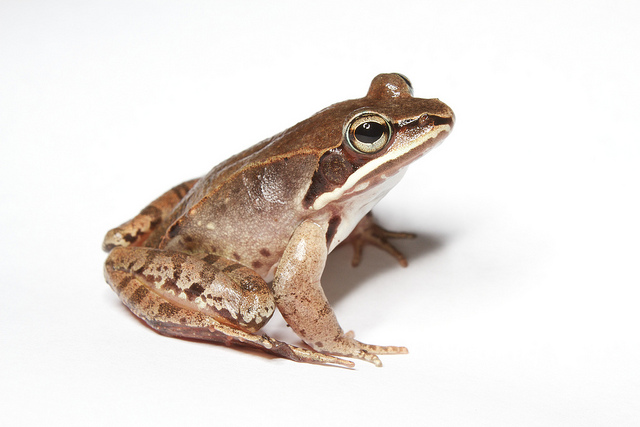Neonicotinoids are prophylactically used globally on a variety of crops, and there is concern for the potential impacts of neonicotinoids on aquatic ecosystems. The intensive use of pesticides on crops has been identified as a contributor to population declines of amphibians, but currently little is known regarding the sublethal effects of chronic neonicotinoid exposure on amphibians. The objective of the present study was to characterize the sublethal effect(s) of exposure to 3 environmentally relevant concentrations (1 μg/L, 10 μg/L, and 100 μg/L) of 2 neonicotinoids on larval wood frogs (Lithobates sylvaticus) using outdoor mesocosms. We exposed tadpoles to solutions of 2 commercial formulations containing imidacloprid and thiamethoxam, and assessed survival, growth, and development. Exposure to imidacloprid at 10 μg/L and 100 μg/L increased survival and delayed completion of metamorphosis compared with controls. Exposure to thiamethoxam did not influence amphibian responses. There was no significant effect of any treatment on body mass or size of the metamorphs. Further assessment of both direct and indirect effects on subtle sublethal endpoints, and the influence of multiple interacting stressors at various life stages,is needed to fully understand the effects of neonicotinoids on amphibians.
Source: Robinson SA et al. Environ Toxicol Chem 2017, 36: 1101–1109.
http://onlinelibrary.wiley.com/doi/10.1002/etc.3739/epdf
Read more at: https://phys.org/news/2017-03-pesticides-impact-wood-frogs.html#jCp

- Login om te reageren
